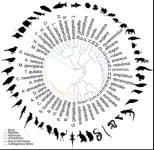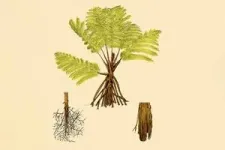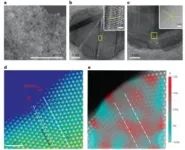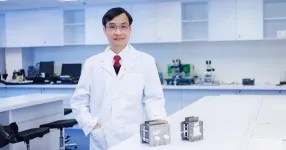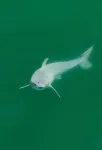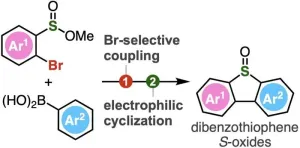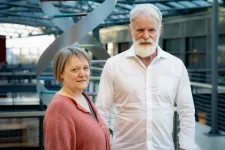(Press-News.org)
Researchers mapped genetic blueprints for 51 species including cats, dolphins, kangaroos, penguins, sharks, and turtles, a discovery that deepens our understanding of evolution and the links between humans and animals.
“Being able to access that genetic information will have huge implications for understanding human health and evolution,” said lead author Michael Schatz, a Bloomberg Distinguished Professor of computer science and biology at Johns Hopkins University. “A lot of work on drug compounds starts in mice and other animal models, so understanding their genomes and the genomes of other animals directly benefits us.”
The team, working with the Vertebrate Genomes Project, sequenced the genomes of 51 vertebrate species, prioritizing those that are useful models for understanding human evolution. The researchers developed novel algorithms and computer software that cut the sequencing time from months—or decades in the case of the human genome—to a matter of days.
The findings are newly published today in the journal Nature Biotechnology.
Mammals, a subset of vertebrates that includes primates, dogs, cats, mice, and humans, share 50% to 99% of the same DNA and nearly all the genes from a common ancestor that lived roughly 200 million years ago. By comparing the complete genomes of these species, researchers can start to identify when and where DNA sequences diverged and the implications of those differences for humans. But, researchers say, this work has been limited by the number and quality of vertebrate genomes available, which has focused on a few key species.
Vertebrate genomes are billions of characters long, too long for any gene sequencing technology to read in one complete pass. Researchers must rely on tools that break down the genome into smaller, easier to read segments. Computer programs then take those segments and determine how they fit together, like pieces of a jigsaw puzzle.
But traditional technology was not able to finish the puzzle.
“Have you ever done a massive jigsaw puzzle where at some point all that’s left is blue sky, and you don’t think you’ll ever be able to fit the right pieces together? The old software would basically give up on these hard parts of the genome. That’s the problem with genome assembly,” Schatz said. “Our new program, using the latest sequencing data and the latest assembly algorithms, knows how to work through those parts to get a more complete picture.”
To test their technology, researchers mapped the genome of the zebra finch, a songbird that had already been sequenced to study brain development. The new technology was far better at reassembling segments of the genome, creating a more accurate and complete map.
The open-source software is available online via Galaxy, a web-based platform, based at Johns Hopkins and Penn State, that offers scientific software for free to the public and supports half a million scientists and educators worldwide.
“In the past, only a handful of elite research groups would have had access to the resources needed to assemble these genomes. Now, anyone on the planet with access to the internet can visit the website and, with a few clicks of the button, run multiple scientific tools,” said Alex Ostrovsky, a Johns Hopkins software engineer on the Galaxy team who was responsible for making the tools easy to use for noncoders.
The team will continue working with the Vertebrate Genomes Project to sequence the genomes of at least one species across all 275 vertebrate orders.
“In some ways, we’re building an evolutionary time machine,” Schatz said. “We can trace how vertebrates evolved over time and eventually gave rise to genes and sequences that are uniquely found in humans.
“Having the genes of our evolutionary cousins mapped out will help us better understand ourselves.”
This work was performed in collaboration with researchers at Pennsylvania State University, Rockefeller University, and several other institutions. Computational resources were provided by the Advanced Cyberinfrastructure Coordination Ecosystem (ACCESS-CI), the Texas Advanced Computing Center, the JetStream2 scientific cloud, and the Rockfish data center at Johns Hopkins University.
END
INDIANAPOLIS -- Approximately four of five primary care clinicians consider themselves on the front lines of brain health. In the U.S., clinicians are the first point of contact for patients worried about memory loss and are most likely the first to detect and evaluate patients experiencing mild cognitive impairment, Alzheimer’s disease or related dementias.
In a new study focused on understanding the barriers of clinician-patient conversations about brain health and cognitive concerns, Regenstrief Institute and Indiana University School of Medicine Research Scientist Malaz Boustani, M.D., MPH, found that early conversations about brain health between ...
Global warming continues to pose a threat to human society and the ecological systems, and carbon dioxide accounts for the largest proportion of the greenhouse gases that dominate climate warming. To combat climate change and move towards the goal of carbon neutrality, researchers from The Hong Kong Polytechnic University (PolyU) have developed a durable, highly selective and energy-efficient carbon dioxide (CO2) electroreduction system that can convert CO2 into ethylene for industrial purposes to provide an effective solution for ...
So how can the speed of dark matter be measured? The prerequisite is to find a galaxy in the universe that moves relative to dark matter. Since everything in the universe is in motion and there is a great deal of dark matter, it is not difficult to find such galaxies.
Heavy objects, like galaxies, attract all types of matter, whether it is dark matter or visible matter that we encounter on a daily basis. As dark matter moves past a galaxy, the galaxy begins to pull the dark matter particles towards it. However, the change of speed direction of the particles takes time. Before ...
A common test used to decide whether breast cancer patients should get chemotherapy may be making bad recommendations for some Black women, leading them to forgo chemotherapy when it might have helped, according to new research from the University of Illinois Chicago.
The test, known as the 21-gene breast recurrence score, is the most commonly ordered biomarker test used to guide doctor’s recommendations for patients with estrogen receptor-positive breast cancer — the most common ...
Great whites, the largest predatory sharks in the world with the most fatal attacks on humans, are tough to imagine as newborn babies. That is partially because no one has seen one in the wild, it seems, until now.
Wildlife filmmaker Carlos Gauna and UC Riverside biology doctoral student Phillip Sternes were scanning the waters for sharks on July 9, 2023, near Santa Barbara on California’s central coast. That day, something exciting appeared on the viewfinder of Gauna’s drone camera. It was a shark ...
CHAMPAIGN, Ill. — Plant biologists report that a species of tree fern found only in Panama reanimates its own dead leaf fronds, converting them into root structures that feed the mother plant. The fern, Cyathea rojasiana, reconfigures these “zombie leaves,” reversing the flow of water to draw nutrients back into the plant.
Watch a video about the findings.
This weird phenomenon occurs only after the leaves die and droop to the ground, said University of Illinois Urbana-Champaign plant biology professor James Dalling, ...
Organic compounds in the field of chemistry range from simple hydrocarbons to complex molecules, with diverse functional groups added to the main carbon backbone. These functional groups impart the compounds distinct chemical properties as well as participate in various chemical transformations, making them important precursors for the synthesis of diverse compounds. Scientists have, therefore, actively engaged in creating molecules that feature novel and highly reactive functional groups.
One such class of compounds are dibenzothiophenes and their derivatives containing ...
A sequence variant that increases risk of pregnancy loss
Scientists at deCODE genetics, a subsidiary of Amgen and their collaborators from Iceland, Denmark and USA published a study today in Nature Structural and Molecular Biology titled “Variant in the synaptonemal complex protein SYCE2 associates with pregnancy loss through effects on recombination”.
While it is well established that chromosomal abnormalities are a major cause of miscarriages the biology behind pregnancy losses with or without chromosomal errors is not well understood. Over 114 thousand women from Iceland, Denmark, UK, USA and Finland who have ...
The number of people with obesity has nearly tripled since 1975, resulting in a worldwide epidemic. While lifestyle factors like diet and exercise play a role in the development and progression of obesity, scientists have come to understand that obesity is also associated with intrinsic metabolic abnormalities. Now, researchers from University of California San Diego School of Medicine have shed new light on how obesity affects our mitochondria, the all-important energy-producing structures of our cells.
In a study published January ...
Cancer Research UK-funded scientists have made an unusual discovery that could help to identify patients who are up to two and a half times more likely to respond to currently available cancer drugs.
Scientists at the Cancer Research UK Scotland Institute and Memorial Sloan Kettering Cancer Centre in the USA have “rewired” the DNA of mitochondria – energy factories found in every living cell. They found that creating mutations in parts of this DNA determines how well cancer will respond to immunotherapy – treatments which harness the body’s natural defences ...
